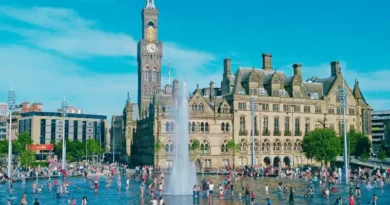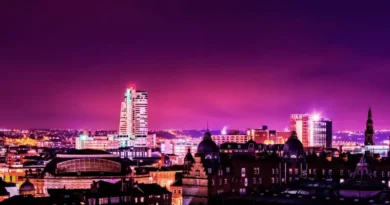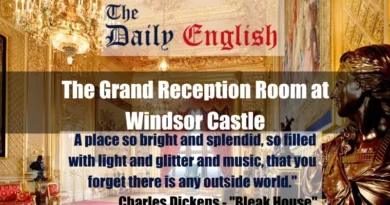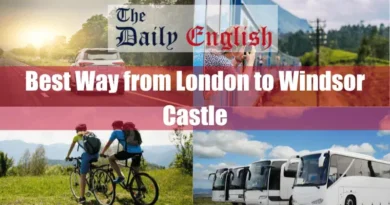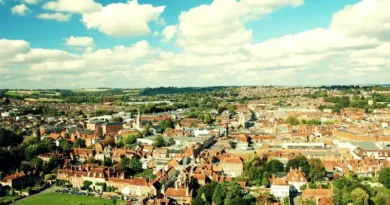Get to Windsor Castle From Peterborough
Key Points
- Windsor Castle is approximately 99.4 miles from Peterborough via the M1, 112 miles via the A45 and M1, and 121 miles via the M40. You have several options to get to Windsor Castle from Peterborough: by car, train, or cycling.
- The fastest and most convenient method is by train, taking approximately 1 hour 54 minutes via a direct service from Peterborough to London King’s Cross, followed by a short Underground transfer to Paddington and then a GWR train to Windsor & Eton Central.
- By car, the best route is via the M1 motorway, taking around 2 hours and 11 minutes under ideal conditions. This route follows the A1(M), A421, M1, M25, and M4 before reaching Windsor. Alternative driving routes include the A45 and M40, which are slightly longer and can take up to 2 hours and 38 minutes.
- Cycling is the most scenic but time-consuming option, with routes ranging from 107 to 121 miles, taking approximately 9 to 10 hours.
- The train is the best choice for efficiency due to speed and convenience while driving offers flexibility for those with a vehicle.
Routes Comparison Table
| Mode of Transport | Route | Distance | Estimated Travel Time | Key Stops & Interchanges | Notable Considerations |
|---|---|---|---|---|---|
| Car | Via M1 | 99.4 miles | ~2 hours 11 minutes | M1, M25, M4 | Fastest route; may experience congestion on M25 |
| Via A45 & M1 | 112 miles | ~2 hours 27 minutes | A45, M1, M25, M4 | Slightly longer; avoids some M1 traffic hotspots | |
| Via M40 | 121 miles | ~2 hours 38 minutes | A605, A45, A43, M40, A404(M), M4 | Scenic but longer; M40 is usually less congested | |
| Train | Via London King’s Cross & Slough | Varies | ~1 hour 54 minutes – 2 hours 30 minutes | King’s Cross, Paddington, Slough | Fastest train option; some walking required between stations |
| Via London & Vauxhall | Varies | ~2 hours 15 minutes | King’s Cross, Vauxhall, Windsor & Eton Riverside | Requires London Underground transfer | |
| Via London & South Western Railway | Varies | ~2 hours 25 minutes | King’s Cross, Waterloo, Windsor & Eton Riverside | More scenic route; avoids Slough interchange | |
| Bicycle | Via National Cycle Route 51 | 117 miles | ~10 hours 1 minute | Cambridge, Bedford, Milton Keynes | Long but follows dedicated cycle paths |
| Alternative Route 51 | 107 miles | ~9 hours 25 minutes | Huntingdon, St. Neots | Less distance but slightly more elevation gain | |
| Via Cambridgeshire Guided Busway | 121 miles | ~10 hours 21 minutes | St. Ives, Fen Drayton Lakes, Cambridge | Incorporates guided busway cycle paths |
Key Insights:
- Fastest Option: Train via King’s Cross & Slough (~1 hour 54 minutes)
- Best for Flexibility: Car via M1 (~2 hours 11 minutes)
- Most Scenic: Car via M40 or train via Waterloo (~2 hours 38 minutes)
- Most Eco-Friendly: Cycling via National Cycle Route 51 (~9-10 hours)
- Most Cost-Effective: Cycling (free) or train (advance tickets available for savings)
Travellers should consider congestion, train connection times, and route conditions when selecting their preferred travel method.
Getting to Windsor Castle from Peterborough by Car
Route 1: Via M1
Travelling by car from Peterborough to Windsor Castle is straightforward, with the fastest route taking approximately 2 hours and 11 minutes under ideal conditions, covering a distance of 99.4 miles. This journey primarily follows the M1 motorway, passing through Cambridgeshire, Bedfordshire, and Buckinghamshire before reaching Windsor in Berkshire. Below is a step-by-step guide for this route:
Step 1: Departing from Peterborough
- Start your journey heading north toward Priestgate.
- Turn left onto Priestgate.
- Turn right onto Cross Street.
- Cross Street curves left and becomes Cowgate.
- At Queensgate Roundabout, take the 2nd exit onto Crescent Bridge/Thorpe Road/A1179 and continue on Thorpe Road/A1179.
- Take the 2nd exit onto Longthorpe Parkway/A1179 at the next roundabout.
- At another roundabout, take the 1st exit onto the Nene Parkway/A1260 ramp towards London/A1(M)/Northampton/A605.
- Merge onto Nene Parkway/A1260.
- At Hampton Roundabout, take the 3rd exit onto the Fletton Parkway/A1139 ramp towards Orton Centre/Lynchwood.
- Merge onto Fletton Parkway/A1139.
- Use the left lane to merge onto A1(M) via the ramp to London/Huntingdon.
- Continue on A1(M) for approximately 12.2 miles.
Step 2: Travelling from A1(M) to M1
- Continue on A1 for 4.8 miles.
- Take the 3rd exit at the roundabout and stay on A1 for 8.0 miles.
- Keep right to continue on Great North Road/A1.
- At Black Cat Roundabout, take the 2nd exit onto A421.
- Continue on A421 for 17.4 miles.
- Take the exit toward M1 South.
- Use the left lane to take the ramp toward Ampthill/Ridgmont/A507/A4012/M1.
- Merge onto Salford Road.
- At the roundabout, take the 2nd exit onto the M1 ramp to London.
Step 3: Following M1 and M25 to Slough
- Merge onto M1 and continue for 24.1 miles.
- At Junction 6A, use the 3rd lane from the left to take the M25 exit towards M40/M4/Heathrow Airport.
- Use the right lane to take the ramp onto M25 and continue for 18.8 miles.
- At Junction 15, use the left two lanes to merge onto M4 towards Slough.
- Continue for 2.2 miles, then take the A4 exit towards Colnbrook/B470/Datchet/Langley.
Step 4: Final Leg to Windsor Castle
- At Langley Roundabout, take the 2nd exit onto Major’s Farm Road/B470.
- Continue on B470 for 1.7 miles.
- Take the 2nd exit onto London Road/B376/B470 at the roundabout.
- Take the 1st exit onto High Street/B470 at the next roundabout.
- Turn right onto Windsor Road/B470 and continue for 1.4 miles.
- Turn left onto Thames Street/B3022 (note: parts of this road may be closed at certain times or days).
- Finally, turn left onto Castle Hill.
Arriving at Windsor Castle: You have now reached your destination at Windsor Castle, one of the most iconic and historic landmarks in the United Kingdom.
Route 2: Via A45 and M1

For those seeking an alternative route, travelling via the A45 and M1 provides a convenient option. Under ideal traffic conditions, this journey takes approximately 2 hours and 27 minutes, covering a total distance of 112 miles.
Step 1: Departing from Peterborough
Begin your journey in Peterborough and follow these steps to get onto the M1 in West Northamptonshire:
- Head north toward Priestgate (115 ft).
- Turn left onto Priestgate (282 ft).
- Turn right onto Cross Street (289 ft).
- Cross Street turns left and becomes Cowgate (0.1 mi).
- Take the 2nd exit onto Crescent Bridge/Thorpe Road/A1179 at Queensgate Roundabout and continue (0.9 mi).
- Take the 2nd exit onto Longthorpe Parkway/A1179 (0.9 mi) at the next roundabout.
- At the next roundabout, take the 1st exit onto Nene Parkway/A1260 ramp toward London/A1(M)/Northampton/A605 (0.2 mi).
- Merge onto Nene Parkway/A1260 (1.4 mi).
- At Hampton Roundabout, take the 3rd exit onto Fletton Parkway/A1139 ramp toward Orton Centre/Lynchwood (0.4 mi).
- Merge onto Fletton Parkway/A1139 (2.1 mi).
- At Fletton Parkway Interchange, take the 2nd exit onto A605 (0.2 mi).
- Take the 2nd exit at the roundabout and continue on A605 (4.8 mi).
- Continue on A605, passing multiple roundabouts (approx. 9.7 mi total).
- At Thrapston Interchange, take the 2nd exit onto A45 (3.0 mi).
Step 2: Travelling on the A45
Once on the A45, follow these instructions:
- Take the 3rd exit at the roundabout to stay on A45 (2.1 mi).
- Continue through Stanwick Roundabout, taking the 2nd exit to stay on A45 (1.1 mi).
- Continue past several roundabouts, ensuring you stay on A45 (approx. 6 mi total).
- Merge onto A45 and continue for 11.2 miles.
- Use the middle lane to continue on London Road/A45 (0.5 mi).
- Take a slight left toward Exit 15, then continue onto Exit 15 (0.4 mi).
Step 3: Joining the M1 and M25
From Exit 15, follow these steps:
- Merge onto the M1 (40.9 mi).
- At Junction 6A, use the 3rd lane from the left to take the M25 exit towards M40/M4/Heathrow Airport (0.8 mi).
- Use the right lane to take the ramp onto M25 (18.8 mi).
- At Junction 15, use the left 2 lanes to merge onto M4 towards Slough (2.2 mi).
- Take the A4 exit towards Colnbrook/B470/Datchet/Langley (0.3 mi).
Step 4: Final Stretch to Windsor Castle
Now, in Slough, follow these directions to reach Windsor Castle:
- At Langley Roundabout, take the 2nd exit onto Major’s Farm Road/B470 (1.7 mi).
- Take the 2nd exit onto London Road/B376/B470 (210 ft) at the next roundabout.
- At the next roundabout, take the 1st exit onto High Street/B470 (0.2 mi).
- Turn right onto Windsor Road/B470 (1.4 mi).
- Turn left onto Thames Street/B3022 (0.2 mi). Note: Parts of this road may be closed at certain times or days.
- Turn left onto Castle Hill (266 ft).
Arrival at Windsor Castle
You have now arrived at Windsor Castle, one of the most iconic landmarks in the United Kingdom. Enjoy your visit!
Route 3: Via M40

If you prefer to take the M40, this route covers approximately 121 miles and, under ideal conditions, takes around 2 hours and 38 minutes.
Departure from Peterborough
Begin your journey in Peterborough, United Kingdom, and follow these steps:
- Head north towards Priestgate (115 ft).
- Turn left onto Priestgate (282 ft).
- Turn right onto Cross Street (289 ft), which then turns left and becomes Cowgate (0.1 mi).
- At Queensgate Roundabout, take the 2nd exit onto Crescent Bridge/Thorpe Road/A1179 and continue following Thorpe Road/A1179 (0.9 mi).
- Take the 2nd exit onto Longthorpe Parkway/A1179 (0.9 mi) at the roundabout.
- At the next roundabout, take the 1st exit onto the Nene Parkway/A1260 ramp towards London/A1(M)/Northampton/A605 (0.2 mi).
Main Route via A605, A45, A43, M40, and M4
From Nene Parkway/A1260, continue with the following steps:
- Merge onto Nene Parkway/A1260 (1.4 mi).
- At Hampton Roundabout, take the 3rd exit onto the Fletton Parkway/A1139 ramp to Orton Centre/Lynchwood (0.4 mi).
- Merge onto Fletton Parkway/A1139 (2.1 mi).
- At Fletton Parkway Interchange, take the 2nd exit onto A605 (0.2 mi).
- Continue on A605 through multiple roundabouts (totalling about 17 miles), then take the 2nd exit at Thrapston Interchange onto A45 (3.0 mi).
- Stay on A45 through various roundabouts for approximately 20 miles until merging onto A5076 (1.7 mi).
- Follow A5076 and A5123, then take A43 for around 18 miles through multiple roundabouts.
- At Cherwell Roundabout, take the 1st exit onto the M40(South) ramp towards London/Newbury/Oxford (246 ft).
- Merge onto M40 and continue for 33.9 miles.
- At Junction 4, take the A404 exit towards High Wycombe/Marlow/M4/Maidenhead (0.3 mi), then take the ramp to A404.
- Follow A404 and A404(M) for about 10 miles towards Slough, merging onto M4 (4.4 mi).
- Take the exit towards A355 (0.3 mi).
Final Approach to Windsor Castle
- At the roundabout, take the 3rd exit onto A355 (0.5 mi).
- Continue onto Royal Windsor Way/A332 (1.2 mi).
- Slight left onto Clarence Road (0.5 mi), passing through one roundabout.
- Continue onto Victoria Street (0.3 mi).
- At the roundabout, take the 1st exit onto Sheet Street/B3022 (0.2 mi) — note that parts of this road may be closed at certain times.
- Turn right onto Castle Hill (266 ft).
- Arrive at Windsor Castle.
By following these detailed steps, you will reach Windsor Castle efficiently via the M40 route, enjoying a smooth and scenic drive through the heart of England.
Getting to Windsor Castle From Peterborough by Train
Travelling from Peterborough to Windsor Castle by train involves multiple routes with varying journey times, stopovers, and transfers. The travel duration generally ranges between approximately 1 hour 54 minutes and 2 hours 30 minutes, depending on the chosen route and the efficiency of connections. Here is a breakdown of why the journey times differ and what to expect during your trip.
Factors Affecting Travel Time
- Number of Transfers and Interchanges:
- Journeys requiring multiple changes, including walking between stations or switching between train and underground services, tend to have longer travel times.
- Routes passing through King’s Cross often require an additional walk to St Pancras International, adding a few extra minutes.
- Some routes include a transfer at Slough, where passengers must switch from the Elizabeth Line or another mainline service to the local train heading towards Windsor.
- Waiting Times Between Connections:
- The time spent waiting for connecting trains can significantly impact the overall journey duration.
- For instance, some routes have seamless transitions with only a minute or two between services, while others require waiting times of 10 minutes or more.
- Sometimes, a delayed arrival at one station could result in missing a scheduled connection, thereby increasing the total travel time.
- Route Variations and Stop Frequency:
- Some services are direct and non-stop between Peterborough and London King’s Cross, taking around 45-50 minutes.
- Others involve stopping services, such as Thameslink trains, which can add extra minutes to the journey.
- Different services from London to Windsor take different routes:
- The Elizabeth Line and GWR route through Slough, which is generally faster.
- The South Western Railway service from Vauxhall to Windsor & Eton Riverside, which includes multiple stops and takes slightly longer.
- Some routes require an underground transfer, such as via the Circle or Victoria Line, which introduces additional transit time.
- Walking Distances Between Transfers:
- Walking between King’s Cross and St Pancras International is a short 4-minute walk but may take longer depending on passenger congestion.
- Routes requiring a change at Paddington or Vauxhall also involve a short walk, which can add time, especially for passengers unfamiliar with the stations.
- The final leg from Windsor & Eton Central or Windsor & Eton Riverside to Windsor Castle involves a brief walk of 7-10 minutes.
- Alternative Transport Modes for the Final Stretch:
- In some cases, buses are used instead of trains for the last part of the journey from Slough to Windsor, which extends the travel time.
- The 703 or 702 bus services from Slough to Windsor can take approximately 17 minutes, compared to the quicker train option taking just 6 minutes.
The fastest journey available is around 1 hour 54 minutes, while the longest can take up to 2 hours 30 minutes. Travel duration primarily depends on the efficiency of transfers, the number of stops, and waiting times between trains. Passengers seeking a quicker journey should opt for routes with fewer interchanges and shorter waiting times at connection points. However, those looking for a more flexible journey may prefer routes with additional transfer options, allowing for adjustments in case of delays.
Getting to Windsor Castle From Peterborough By Cycle
Embarking on a cycling journey from Peterborough to Windsor Castle offers several route options, each with distinct characteristics and notable landmarks. Below is a detailed overview of these routes, including distances, elevations, and points of interest:
1. Via National Cycle Route 51
- Distance: Approximately 117 miles (188 kilometres)
- Estimated Duration: Around 10 hours and 1 minute
- Elevation Gain: 1,670 feet (509 metres)
- Elevation Loss: 1,575 feet (480 metres)
- Maximum Elevation: 459 feet (140 metres)
- Minimum Elevation: 16 feet (5 metres)
- Notable Considerations: This route includes sections with restricted usage or private roads. National Cycle Route 51 is a long-distance path connecting several cities in southern England, including Oxford, Milton Keynes, Bedford, Cambridge, and Colchester.
Notable Places Along the Route:
- Peterborough: Starting in this historic city, known for its impressive Peterborough Cathedral, a prime example of Norman architecture.
- Cambridge: Home to the prestigious University of Cambridge, this city offers numerous colleges, museums, and the scenic River Cam.
- Bedford: A market town featuring the picturesque Embankment along the River Great Ouse and the Higgins Bedford museum and gallery.
- Milton Keynes: Known for its modern urban design and extensive green spaces, including Willen Lake, a popular spot for relaxation and water sports.
- Windsor: The journey culminates at Windsor Castle, the oldest and largest inhabited castle in the world and an official residence of the King.
2. Alternative via National Cycle Route 51
- Distance: Approximately 107 miles (172 kilometres)
- Estimated Duration: Around 9 hours and 25 minutes
- Elevation Gain: 1,969 feet (600 metres)
- Elevation Loss: 1,873 feet (571 metres)
- Maximum Elevation: 400 feet (122 metres)
- Minimum Elevation: 16 feet (5 metres)
- Notable Considerations: Similar to the previous option, this route also traverses sections with restricted usage or private roads. Cyclists should be aware of areas where cycling isn’t permitted or where time restrictions apply and plan alternative routes or be prepared to dismount and walk as necessary.
Notable Places Along the Route:
- Huntingdon: A charming market town with historical significance, offering sights such as the Cromwell Museum dedicated to Oliver Cromwell, who was born nearby.
- St. Neots: Known for its riverside park and vibrant market square, providing a pleasant stopover for rest and refreshments.
3. Via Cambridgeshire Guided Busway
- Distance: Approximately 121 miles (195 kilometres)
- Estimated Duration: Around 10 hours and 21 minutes
- Elevation Gain: 1,739 feet (530 metres)
- Elevation Loss: 1,647 feet (502 metres)
- Maximum Elevation: 446 feet (136 metres)
- Minimum Elevation: 7 feet (2 metres)
- Notable Considerations: This route incorporates the Cambridgeshire Guided Busway, which features a tarmac cycle track/bridleway alongside certain sections. However, cyclists should verify the current status of the busway path, as there have been instances of closures and restrictions.
Notable Places Along the Route:
- St. Ives: A historic market town featuring charming streets and the iconic St. Ives Bridge, uniquely including a chapel in the middle.
- Fen Drayton Lakes: Adjacent to the busway, this RSPB nature reserve comprises a network of lakes and wetlands, offering excellent bird-watching opportunities and a serene natural setting.
- Cambridge Science Park: As you approach Cambridge, you’ll pass by this hub of innovation and technology, reflecting the city’s modern advancements alongside its historic charm.
General Recommendations for Cyclists:
- Route Planning: Due to potential restricted areas and private roads, you should plan your journey thoroughly, consulting up-to-date maps and local cycling resources.
- Elevation Awareness: Be prepared for varying elevations along these routes, which can impact the difficulty and duration of your ride.
- Legal Compliance: Always adhere to local regulations and respect private property. In areas where cycling is restricted, seek alternative paths or dismount and walk your bicycle as required.
- Safety Precautions: Ensure your bicycle is in good condition, carry necessary repair kits, stay hydrated, and inform someone of your travel plans before embarking on your journey.
By considering these factors and preparing adequately, you can enjoy a rewarding cycling experience from Peterborough to Windsor Castle.
Conclusion
Travelling from Peterborough to Windsor Castle offers several options, each with its own advantages. The train provides the fastest and most convenient journey, typically taking around 1 hour and 54 minutes, with a seamless transfer through London. Driving offers flexibility, with the M1 route being the quickest at approximately 2 hours 11 minutes under ideal conditions. For those seeking a scenic and physically challenging experience, cycling routes range from 107 to 121 miles, requiring around 9 to 10 hours. Ultimately, the best mode of transport depends on individual preferences, balancing speed, convenience, and the opportunity to explore the English countryside.




